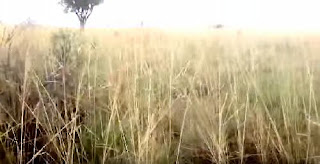Rice came from Asia, more specifically China, right? You would be wrong. Genetic tests on rice grown today show it come from northern Australia. It was clean, uncontaminated and has been pinned down to Cape York in Queensland.
Originally, it was growing wild in the tropics, an unusal place for rice as we associate it with wet conditions all year round. The real question is how did it get to Asia? Obviously, people from Asia came to Australia and took it home.
The Middle East is the cradle of Mankind. For rice it is Australia. Wild rice growing there today is more genetically diverse than anywhere else in the world. Asian domestic and wild rice is inbred. Australian rice is wild. It grows there today unchanged by human intervention. This took place 7,000 years ago.
Australian rice will be the basis of research to improve world food production. It holds the genetic keys to open the door very wide indeed. Modern rice varieties are just little sparks from the fire of the Australian native gene pool. The introduction of genes from Australia is vital to feed the growing world population.
◆ Genetics by Ty Buchanan ◆
●




